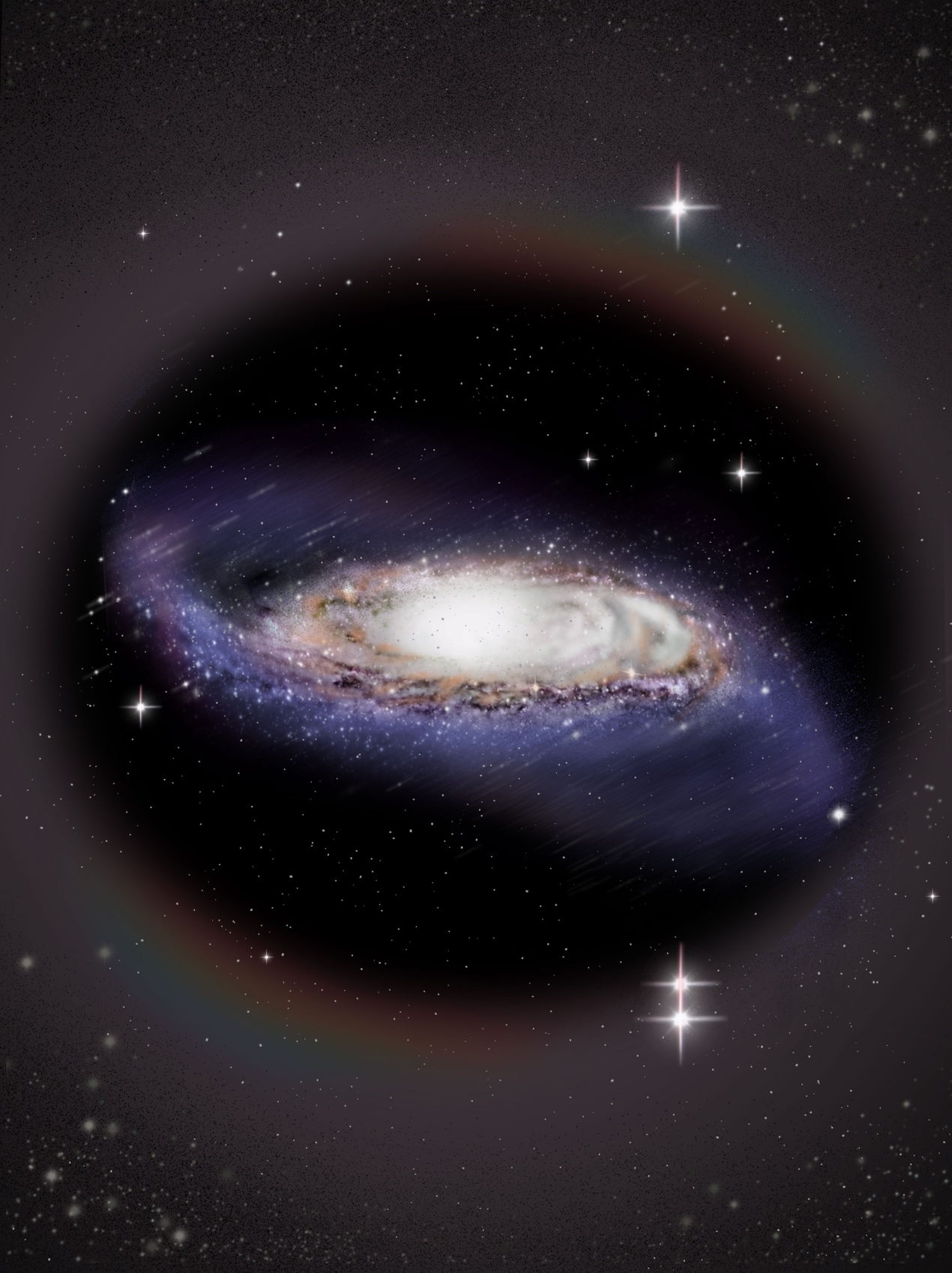Peking University, July 1, 2024: Recently, the journal Nature Astronomy published online the paper "A slightly oblate dark matter halo revealed by a retrograde precessing Galactic disk warp," which is jointly led by the University of Chinese Academy of Sciences, Peking University, the National Astronomical Observatory of the Chinese Academy of Sciences, and Shanghai Jiao Tong University.
The international team pioneered the "motion-picture" method for measuring the precession rate of the Milky Way's disk warp. Using a sample of Cepheid variable stars of different ages, this method allows the precession direction and rate of the Milky Way's warp to be clearly observed. Based on these measurements, the research team revealed that the current dark matter halo of the Milky Way is slightly oblate.
In the nearby universe, nearly one-third of disk galaxies are not perfect disks but exhibit a warped shape resembling a potato chip. Astronomers refer to this phenomenon as a disk warp. The Milky Way, as a typical disk galaxy, also has this warp feature. This tilted, rotating Galactic disk, much like a spinning top, inevitably undergoes precession due to the torque exerted by the surrounding dark matter halo. However, the measurement of this important dynamic parameter, both in direction and rate, has been highly debated. This is because previous measurements relied on indirect kinematic methods, where the tracers used are subject to dynamical perturbations or heating effects, greatly limiting their accuracy and precision.
This study utilized 2,600 classical Cepheid variable stars discovered by Gaia as tracers, along with precise distance and age data from both Gaia and LAMOST. Using this sample, the researchers applied the "motion-picture" method to construct the three-dimensional structure of the Milky Way's disk across populations of various ages. By "seeing" how the disk warp evolves with age, this study found that the warp precesses in a retrograde direction at a rate of 2 km/s/kpc (or 0.12 degrees per million years). Further detailed measurements show that the precession rate decreases with radial distance, indicating that the current dark matter halo enveloping the warp is slightly oblate, with a flattening value q between 0.84 and 0.96. This measurement provides a crucial anchor point for studying the evolution of the Milky Way's dark matter halo.
The study was highly praised by both reviewers: "the ‘motion-picture’ approach to measuring the precession rate is novel and convincing" from Referee #1; "as far as I am aware, this is the first time that the warp is constrained to precess in retrograde direction, and its precession rate is accurately measured" from Referee #2.
Associate Professor Huang Yang from the University of the Chinese Academy of Sciences is the co-first author and co-corresponding author of the paper. Graduate student Feng Qikang from Peking University is the co-first author. Researcher Zhang Huawei from Peking University, Researcher Liu Jifeng from the National Astronomical Observatories of the Chinese Academy of Sciences, and Professor Shen Juntai from Shanghai Jiao Tong University are the co-corresponding authors. This study also includes astronomers from the National Astronomical Observatories of the Chinese Academy of Sciences, Beijing Normal University, and the University of Notre Dame in the United States.
Link to this paper: https://www.nature.com/articles/s41550-024-02309-5
The Galactic disk warp "dances gracefully" under the torque of the dark matter halo (an artistic impression created by Hou Kaiyuan and Dong Zhanxun from the School of Design, Shanghai Jiao Tong University).
Source:
Kavli Institute for Astronomy and Astrophysics, Peking University
Written by:
Liu Shuyan
